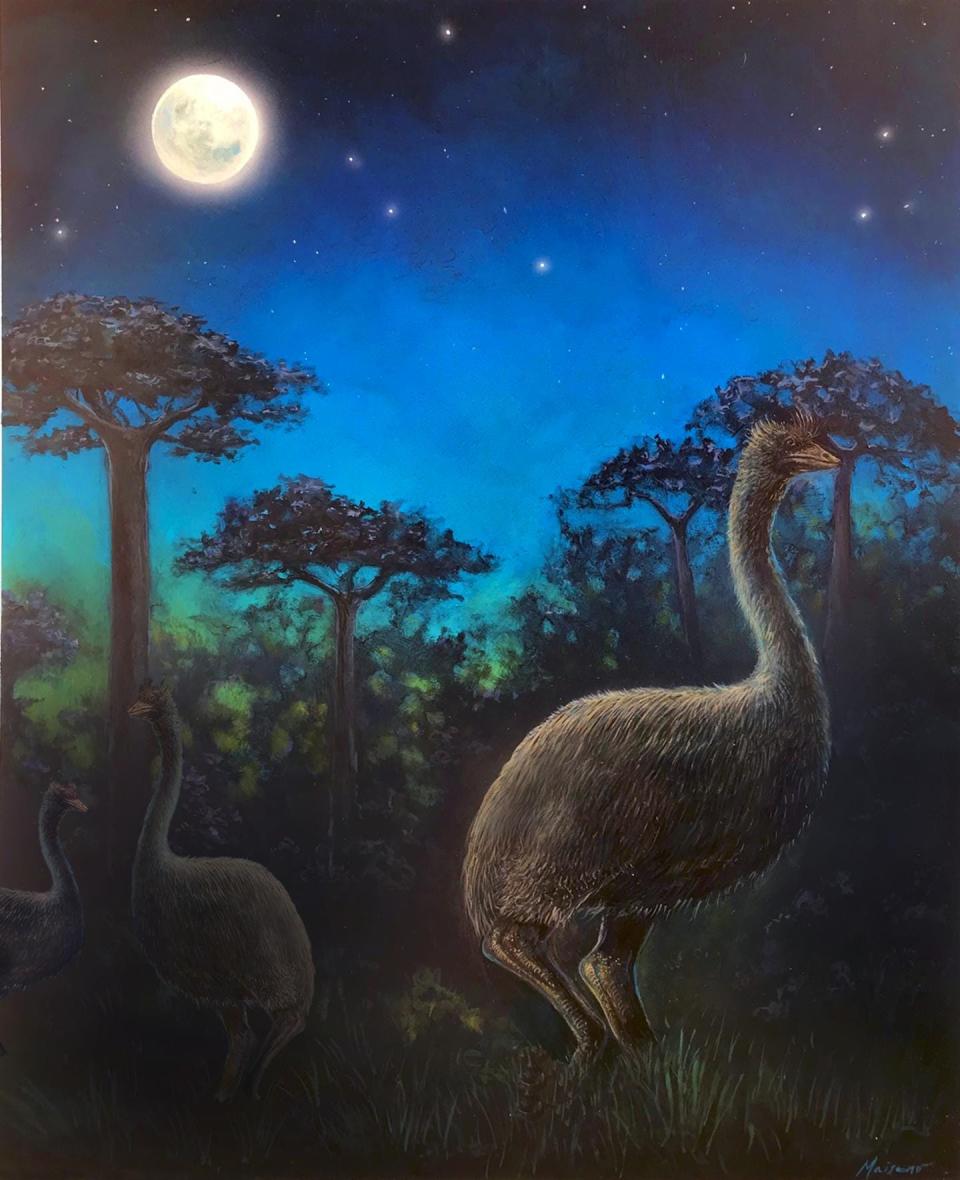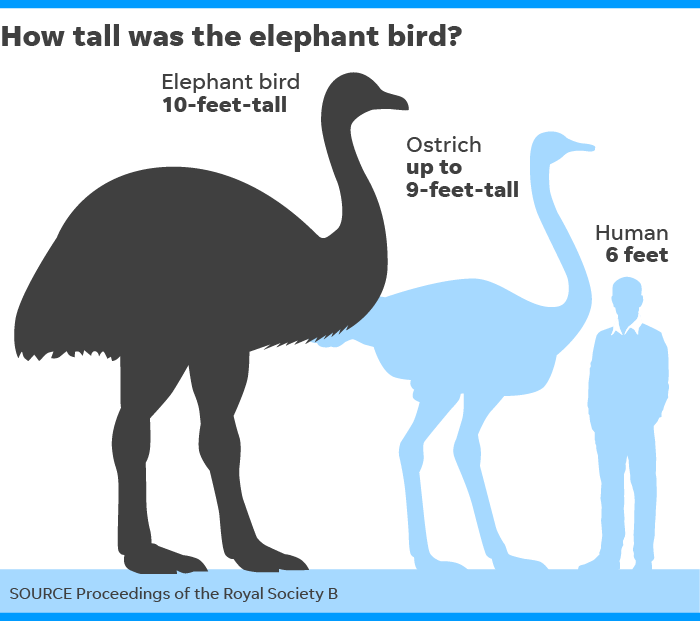How 1,200-year-old eggs from a 9-foot tall, 1,500-pound bird led to a scientific breakthrough
Towering over nine feet tall and weighing over 1,500 pounds, the aepyornis has a pointy beak and powerful talons.
Sometimes called "flightless giants," the birds lived more than 1,200 years ago and were deemed Madagascar’s largest land animals.
Scientists at the University of Colorado Boulder and Curtin University in Australia recently discovered a new lineage of the birds using eggshell remnants, as well as isotope geochemistry and protein extraction. The findings were published last month in the peer-reviewed scientific journal Nature Communications.
“This is the first time a taxonomic identification has been derived from an elephant bird eggshell and it opens up a field that nobody would have thought about before,” said co-author Gifford Miller from the Institute of Arctic and Alpine Research at CU Boulder in a press release.
The findings suggest there may have been more diversity among birds than scientists know about, he said.
Mummies: Gold-covered mummy and 4,000-year-old burial plot among latest Egyptian discoveries
Space: 'Impossibly massive galaxies' discovered at the dawn of the universe, researchers say

How did the team discover the new lineage?
The team set out to collect elephant bird eggshells in 2006 from the southern half of Madagascar. Another researcher beat them to it, so the team instead focused on northern half of the island, CU Boulder said on its website.
The researchers used high-resolution satellite imagery to find areas where wind had blown sands away, revealing the giant, ancient eggshells. The scientists found more than 960 eggshell fragments from 291 different locations, then analyzed them.
Previous discoveries have relied on skeletal remains, so this is the first time a new lineage of elephant bird has been identified from eggshells alone, the university said in a press release.

Why are scientists researching the ancient eggshells now?
Until now, the only concrete information researchers had about the birds is that they descended from the flightless ratite family, similar to the New Zealand kiwi.
"The biodiversity and evolutionary relationships within elephant birds have been uncertain and unstable since they were first described over 150 years ago," the researchers wrote in their paper.

Differences between eggshells and skeletal remains
The scientists said there are large gaps in the fossil record for Madagascar’s extinct elephant birds. They also said skeletal remains are poorly preserved because bone DNA degrades quickly in warm, humid areas.
By looking at the eggshells, which are thicker and can hold valuable information and DNA for up to 10,000 years, the scientists were able to learn more about the ecology and evolution of the birds.
“While we found that there were fewer species living in southern Madagascar at the time of their extinction, we also uncovered novel diversity from Madagascar’s far north,” said lead author Alicia Grealy in the release.
Grealy completed the research as part of her doctoral thesis at Curtin University in Australia.
“These findings are an important step forward in understanding the complex history of these enigmatic birds," she said. "There’s surprisingly a lot to discover from eggshell.”

Miller, from CU Boulder, also studies when humans first appeared on Earth and the extinction of large animals.
According to him, scientists haven't been able to figure out why the elephant bird disappeared.
He said with this new discovery and other eggshell analyses, scientists may be able to figure out how humans impacted the extinction of the elephant bird and others like it.
“What is it that early humans are doing that's resulting in extinction of big animals, especially?" Miller asked. "This is a debate that's been going on for my whole life."
Saleen Martin is a reporter on USA TODAY's NOW team. She is from Norfolk, Virginia – the 757 – and loves all things horror, witches, Christmas, and food. Follow her on Twitter at @Saleen_Martin or email her at sdmartin@usatoday.com.
This article originally appeared on USA TODAY: Researchers discover new elephant bird lineage from 1,200 years ago

